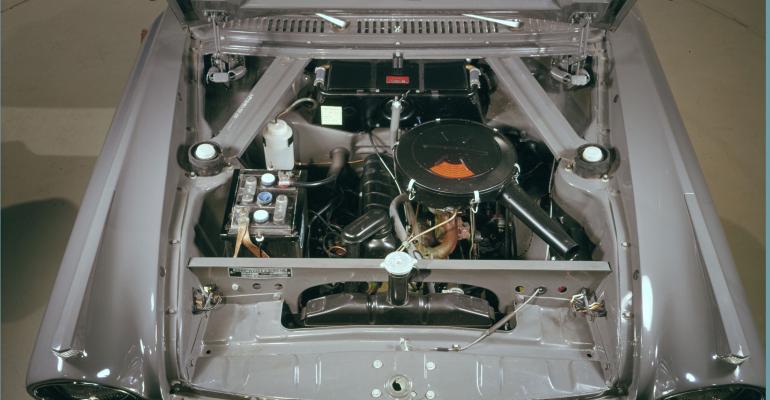When the last Ford Ranger small pickup truck rolls off the assembly line today, it will carry with it the final copy of an iconic engine that has powered nearly 25 million vehicles over its 49-year history.
The 4.0L V-6 in the Ranger is best known as Ford’s Cologne V-6 engine. The mill began life in 1962 as a V-4 in the Ford Taunus, which was built in Germany and sold throughout Europe. The name Cologne comes from Ford’s German engine plant.
Eventually, two additional cylinders were added to the engine, which through its lifespan was offered in a variety of displacements ranging from 1.2L to 4.0L.
The engine powered a number of high-volume Ford vehicles, including the Granada, Transit, Mustang II, Aerostar and Bronco II. It also was sold to other auto makers, including Saab, Land Rover and TVR.
The engine sold in the greatest numbers when its 4.0L version was offered in the Ford Explorer SUV in the 1990s. The Explorer’s best year was 2000, when it sold 445,157 units, according to WardsAuto data.
Dave Graham, engineering supervisor for engine design, led the team in the 1990s that converted the Cologne engine from a pushrod to a single-overhead cam configuration.
He says the multi-national collaboration involved during the many updates was an early example of the auto maker’s current One Ford plan that leverages the auto maker’s global expertise.
Demand for the engine was so strong during the Explorer’s heyday that Ford was shipping blocks castings from its Windsor, ON, Canada, facility to Cologne, and then back to North America for installation, Graham tells WardsAuto.
“One of our immediate tasks was to get out of that situation and increase capacity of the (Cologne) engine plant,” he says, noting at its peak the German factory was building 680,000 engines annually.
Despite its proven versatility over the years, the Cologne engine eventually became obsolete because it couldn’t fit into Ford’s new line of SUVs and cross/utility vehicles due to its “north-south” configuration.
Bob Fascetti, Ford’s director-global engineering, says the Cologne V-6 is an icon. “(It) deserves to be right up there with the very best engines we’ve ever built,” he says in an email. “That engine has done everything we’ve asked it to.”
The Cologne engine’s spiritual successor is the new 1.0L direct-injected turbocharged 3-cyl. that will produced at the Cologne plant.
The 1.0L, Ford’s smallest production engine ever, will be offered in European versions of the Focus C-car and C-Max and B-Max cross/utility vehicles. It will also be available in North America, but the auto maker has yet to disclose in which vehicles.
Ford invested $200 million to develop a special high-tech line in Cologne to build the small engine. The plant has 870 employees.





